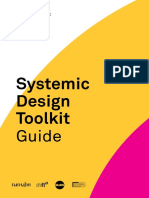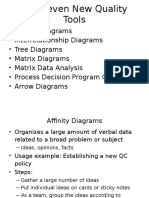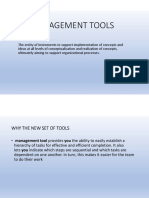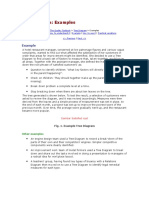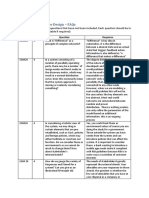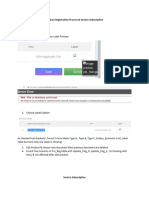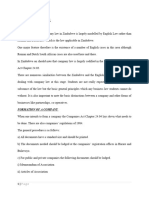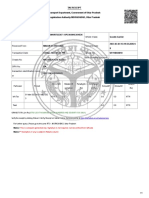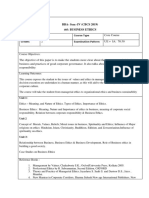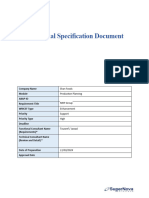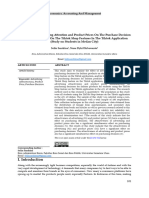19-01-2025
What it does
Entities position map
Tree/Semi-Lattice diagramming
A method for analyzing how entities group together in
Guidelines to identify problems in a system
relation to two intersecting attribute scales
Systems Approach to Design and Systems thinking Helps to understand where entities fall within this defined
(DD 311 – B.Des. and DD 549 – M.Des. EPD)
space, and their relative position to one another
Santosh Jagtap
Department of Design
Indian Institute of Technology Guwahati
1 4
Entities Position Map
Entities Position Map Example - Car Buying in India
A design team worked to understand the car-
Plotting entities on a position map to analyze buying motivations of people in India
their distribution and grouping patterns Created Entities Position Map:
Size of car (large versus small)
Type of car (utility versus indulgence)
3 6
1
� 19-01-2025
• Customer groups like
rich, climbers,
strivers, and seekers
• Opportunity for Analyze the
striver-focused, position map
larger, utility sedans
• Lack of indulgent
compacts
10
How to make an Entities Position Map BENEFITS
• Creates overview
• Facilitates comparison
1. Identify entities for comparison • Identifies opportunities
• Improves communication
2. Determine attributes for comparison • Visualizes information
3. Create a position map and plot entities INPUTS
• List of entities to be compared
4. Analyze the position map
OUTPUTS
5. Share insights and discuss • Map of entities on two attribute
scales revealing opportunity areas
8 11
How to make an Entities Position Map
1. Identify entities for comparison
2. Determine attributes for comparison
Tree/Semi-Lattice
3. Create a position map and plot entities
Diagramming
4. Analyze the position map
5. Share insights and discuss
9 12
2
� 19-01-2025
Tree/Semi-Lattice Diagramming What it does
In a semi-lattice diagram:
• A child entity can have more
than one parent
Diagramming to analyze entities related in • Branches can cross over
hierarchies In a tree diagram:
• One child entity can have only
one parent
• Branches are distinctly
separate
13 16
What it does Example – Social development in designing dwellings
A project aimed at designing dwellings to support
human aspirations
Good for analyzing the hierarchical nature of Social development was a key aspect of the project
relationships among entities
Family support, community participation, and civic
involvement as three main functions of social
development
14 17
3
� 19-01-2025
How to make Tree/Semi-Lattice Diagram Needfinding — guidelines
Cast aside your biases, and listen and observe
1. Identify entities at various levels Note the contradictions
2. Construct the diagram Listen to people's personal stories
3. Analyze the diagram Watch for workarounds
4. Share insights and discuss
Distinguish between needs and solutions
19
Look beyond the obvious
BENEFITS
• Creates overview • When talking to consumers, be an
• Improves communication empathic listener.
• Reveals relationships
• Visualizes information • If a consumer has wrong views, don’t
try to correct them.
INPUTS • Let subjects tell their own story, and
• Set of entities and their relations listen for the things that cause them
based on research findings concern and frustration.
OUTPUTS • If you want to find out what people
• A diagram visualizing entities really need, you have to forget about
related together in hierarchies your problems.
20
Saying
Guidelines to identify problems
and needs in a system
Doing
21
4
� 19-01-2025
Assignment – Systems thinking methods/tools
• Use a variety of keywords: systems thinking, systems
approach, holistic approach, etc.
• Name of the method or tool
• Brief description
• Purpose (how it helps, potential applications)
• Source of the method/tool (textbook, research paper, website,
AI tool – share link to the conversation, etc.)
DD 311: Presentations on 28 January 2025
DD 549: I will send an email
DD 549 students
27 to 31 January
5
� 19-01-2025
References
Kumar, V. (2012). 101 design methods: A structured approach for driving
innovation in your organization. John Wiley & Sons.
Larsson et al. (2012). Collaborative Healthcare Innovation: Workbook. Product
Innovation Engineering program (PIEp). Royal Institute of Technology,
Stockholm, Sweden.
31
Thank you
